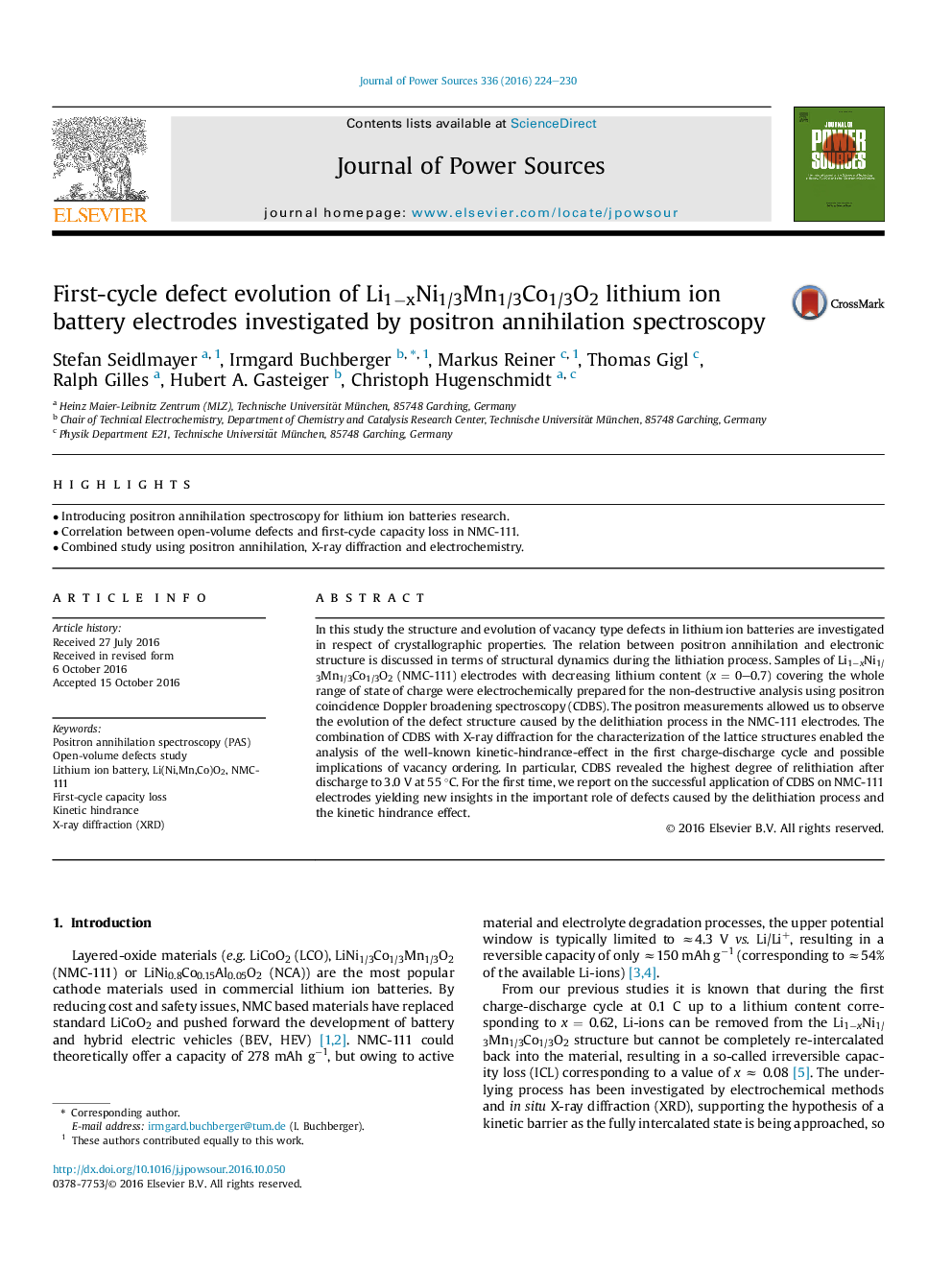| Article ID | Journal | Published Year | Pages | File Type |
|---|---|---|---|---|
| 5149939 | Journal of Power Sources | 2016 | 7 Pages |
Abstract
In this study the structure and evolution of vacancy type defects in lithium ion batteries are investigated in respect of crystallographic properties. The relation between positron annihilation and electronic structure is discussed in terms of structural dynamics during the lithiation process. Samples of Li1âxNi1/3Mn1/3Co1/3O2 (NMC-111) electrodes with decreasing lithium content (x = 0-0.7) covering the whole range of state of charge were electrochemically prepared for the non-destructive analysis using positron coincidence Doppler broadening spectroscopy (CDBS). The positron measurements allowed us to observe the evolution of the defect structure caused by the delithiation process in the NMC-111 electrodes. The combination of CDBS with X-ray diffraction for the characterization of the lattice structures enabled the analysis of the well-known kinetic-hindrance-effect in the first charge-discharge cycle and possible implications of vacancy ordering. In particular, CDBS revealed the highest degree of relithiation after discharge to 3.0 V at 55 °C. For the first time, we report on the successful application of CDBS on NMC-111 electrodes yielding new insights in the important role of defects caused by the delithiation process and the kinetic hindrance effect.
Related Topics
Physical Sciences and Engineering
Chemistry
Electrochemistry
Authors
Stefan Seidlmayer, Irmgard Buchberger, Markus Reiner, Thomas Gigl, Ralph Gilles, Hubert A. Gasteiger, Christoph Hugenschmidt,
